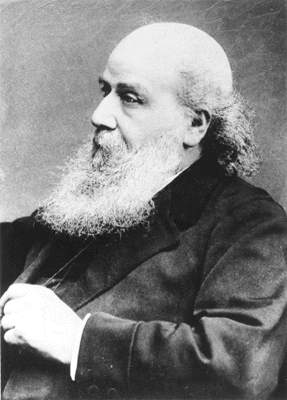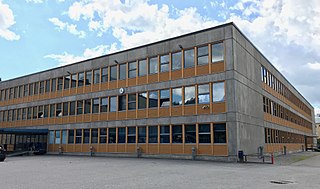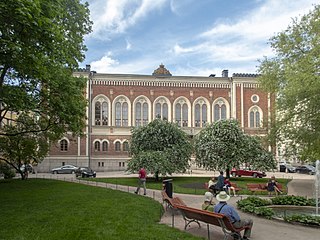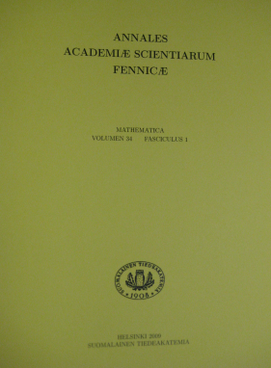
Rolf Herman Nevanlinna was a Finnish mathematician who made significant contributions to complex analysis.

Lars Valerian Ahlfors was a Finnish mathematician, remembered for his work in the field of Riemann surfaces and his textbook on complex analysis.
The International Congress of Mathematicians (ICM) is the largest conference for the topic of mathematics. It meets once every four years, hosted by the International Mathematical Union (IMU).

Ernst Leonard Lindelöf was a Finnish mathematician, who made contributions in real analysis, complex analysis and topology. Lindelöf spaces are named after him. He was the son of mathematician Lorenz Leonard Lindelöf and brother of the philologist Uno Lorenz Lindelöf.

The European Mathematical Society (EMS) is a European organization dedicated to the development of mathematics in Europe. Its members are different mathematical societies in Europe, academic institutions and individual mathematicians. The current president is Jan Philip Solovej, professor at the Department of Mathematics at the University of Copenhagen.
The Finnish Society of Sciences and Letters is a Finnish learned society for natural sciences, social sciences and humanities. It is a bilingual science academy and the oldest of the four science academies in Finland.

The Sylvester Medal is a bronze medal awarded by the Royal Society for the encouragement of mathematical research, and accompanied by a £1,000 prize. It was named in honour of James Joseph Sylvester, the Savilian Professor of Geometry at the University of Oxford in the 1880s, and first awarded in 1901, having been suggested by a group of Sylvester's friends after his death in 1897. Initially awarded every three years with a prize of around £900, the Royal Society have announced that starting in 2009 it will be awarded every two years instead, and is to be aimed at 'early to mid career stage scientist' rather than an established mathematician. The award winner is chosen by the Society's A-side awards committee, which handles physical rather than biological science awards.

Helsingin Suomalainen Yhteiskoulu, commonly abbreviated SYK, is a free elementary, middle and high school in the Etelä-Haaga district of Helsinki, Finland.

The Finnish Academy of Science and Letters is a Finnish learned society. It was founded in 1908 and is thus the second oldest academy in Finland. The oldest is the Finnish Society of Sciences and Letters, which was founded in 1838.

The House of Nobility either refers to the institution of the Finnish nobility or the palace of the noble estate. The Finnish nobility was from 1809 until 1906 the first of the four estates of the realm.
Arthur John "Jack" Lohwater was an American mathematician.
André Haefliger was a Swiss mathematician who worked primarily on topology.

Annales Fennici Mathematici is a peer-reviewed scientific journal published by the Finnish Academy of Science and Letters since 1941. Its founder and editor until 1974 was Pekka Myrberg. It is currently edited by Olli Martio. It publishes research papers in all domains of mathematics, with particular emphasis on analysis. The journal acquired its current name in 2021.

Pekka Juhana Myrberg was a Finnish mathematician known for developing the concept of period-doubling bifurcation in a paper published in the 1950s. The concept was further developed by Mitchell Feigenbaum during the 1970s.

Czesław Olech was a Polish mathematician. He was a representative of the Kraków school of mathematics, especially the differential equations school of Tadeusz Ważewski.

Olli Erkki Lehto was a Finnish mathematician, specializing in geometric function theory, and a chancellor of the University of Helsinki.

Lorenz Leonard Lindelöf was a Finnish mathematician, astronomer and politician.
David Drasin is an American mathematician, specializing in function theory.
Kari Astala is a Finnish mathematician, specializing in analysis.
Pekka Pertti Tukia is a Finnish mathematician who does research on Kleinian groups and their geometric properties.














